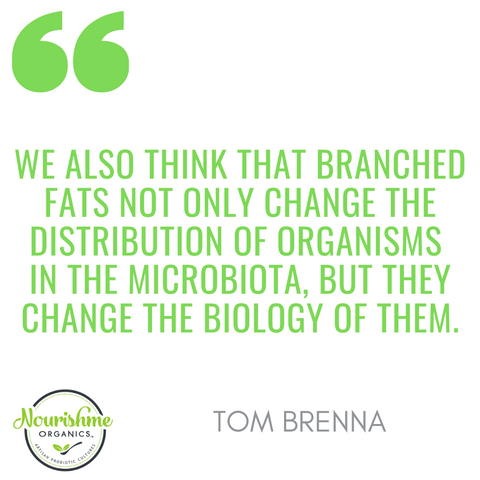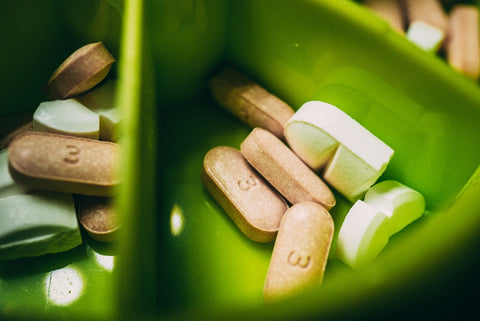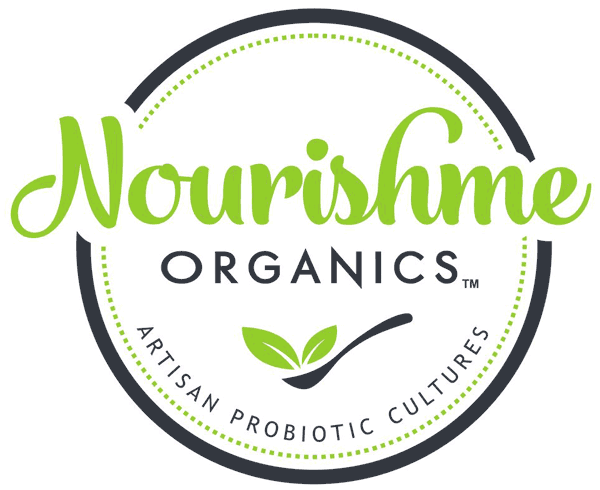Membuka Kekuatan Omega 3 & Lemak Cabang: Percakapan dengan Profesor Tom Brenna


Hari ini kita akan berbicara dengan Profesor Tom Brenna tentang lemak dan berbagai manfaat kesehatan yang menyertainya. Ia adalah seorang profesor di University of Texas di Austin dan seorang profesor emeritus di Cornell University di New York. Ia telah bekerja di bidang nutrisi, lemak, kimia, dan kimia pangan sejak sekitar tahun 1980. Percakapan ini akan berpusat pada jenis-jenis lemak utama: omega-3 dan lemak bercabang. Baca terus untuk mempelajari mengapa lemak-lemak ini penting untuk diet kita, perbedaan di antara keduanya, dan cara menentukan suplemen mana yang harus digunakan jika Anda membutuhkan dosis yang lebih tinggi.
Asam Lemak Omega-3
Lemak omega-3 merupakan salah satu zat yang paling banyak diteliti dalam biologi dengan lebih dari 40.000 makalah ilmiah yang ditulis tentangnya. Zat ini pertama kali dideskripsikan pada tahun 1950-an, tetapi menjadi jelas pada tahun 60-an dan 70-an bahwa zat ini terkait dengan kesehatan neurologis. Zat ini terdapat di otak dan retina. Telah ditunjukkan bahwa mata tidak berfungsi dengan baik jika kekurangan omega-3. Kemudian ada peristiwa luar biasa pada tahun 70-an ketika 2 peneliti pergi ke Greenland dan Kanada Utara dan menemukan bahwa penduduk asli di sana memiliki tingkat penyakit kardiovaskular yang rendah. Mereka juga menyadari bahwa asupan omega-3 melalui ikan dan mamalia laut sangat tinggi.
Hal itu menyebabkan ledakan minat terhadap omega-3, tetapi baru pada tahun 90-an orang mulai memikirkan sifat neurologisnya. Kemudian ada ledakan minat lain di bidang itu yang membawa kita ke masa kini ketika kita memikirkan omega-3 untuk kesehatan otak dan kardiovaskular. Lemak omega-3 dinamai berdasarkan fitur struktur kimianya. Dan jika Anda pernah mendengar tentang asam lemak omega-6, keduanya adalah yin bagi omega-3 yang. Keduanya memiliki banyak kesamaan, tetapi keduanya melakukan hal yang berbeda. Omega-6 untuk tubuh dan omega-3 untuk otak.
Perbedaan Antara EPA dan DHA
Telah banyak pembicaraan dan saran tentang suplementasi selama beberapa tahun terakhir. Ketika Anda berbicara dengan ilmuwan gizi, mereka akan mengatakan bahwa suplementasi lebih baik jika berasal dari sumber makanan. Suplemen merupakan pengganti yang cocok bagi orang-orang yang tidak dapat atau tidak ingin mengonsumsi makanan laut, yang merupakan sebagian besar makanan yang mengandung omega 3. Dan tidak harus makanan laut segar, Anda juga dapat menggunakan makanan laut kalengan untuk mendapatkan manfaat yang sama.
Omega-3 rantai panjang disingkat menjadi EPA dan DHA:
- DHA banyak terdapat di jaringan saraf dan terdapat di retina
- EPA memiliki efek yang lebih terdokumentasi pada kardiovaskular.
EPA kini mulai dikenal sebagai agen yang mengurangi gejala depresi. Ini pertanyaan ilmiah yang menarik karena otak sebenarnya kekurangan EPA. Kita tahu bahwa zat ini masuk ke dalam otak karena otak menyerapnya dan melakukan sesuatu dengannya. Tampaknya, otak menggunakannya sebagai sumber energi. Namun, data dalam penelitian pada manusia menunjukkan bahwa EPA baik untuk mengurangi gejala depresi tersebut.
Suplementasi omega-3 dalam susu formula bayi mulai diperkenalkan pada tahun 90-an. Dan pada tahun 2001 Amerika Serikat menyetujuinya. Kata "suplementasi" menyiratkan bahwa suplementasi bersifat opsional, tetapi ASI di seluruh dunia mengandung omega-3 dan DHA, jadi suplementasi bukanlah hal yang opsional. Kami tidak mengatakan bahwa susu formula bayi dilengkapi dengan Vitamin C, kami hanya menambahkannya karena memang harus ada di dalamnya. Kami menggunakan ASI sebagai panduan untuk mengetahui apa yang dibutuhkan bayi.
Menambahkan omega-3 ke dalam makanan kita adalah ide yang bagus selama tidak memengaruhi kelezatan atau masa simpan. Setelah Perang Dunia 3, sistem pangan berevolusi untuk menghilangkan omega-3 dari sistem pangan karena mengurangi masa simpan. Jadi, mengembalikannya ke berbagai makanan adalah sesuatu yang telah lama ada dalam pikiran banyak dari kita.

Bagaimana Kita Tahu Suplemen Mana yang Harus Dikonsumsi?
Di AS, ada pengujian yang dilakukan secara sukarela dan juga oleh laboratorium pengujian independen pada suplemen. Farmakope AS adalah contohnya. Mereka menetapkan standar dan biasanya saat suplemen diuji oleh mereka, hasilnya cukup baik. Saya sarankan untuk membeli suplemen yang memiliki stempel pengujian pada labelnya. Namun, jika Anda membuka kapsul minyak ikan dan baunya tengik, itu pertanda untuk membawanya kembali ke toko dan mendapatkan kembali uang Anda. Manusia memiliki ambang batas yang sangat rendah terhadap bau molekul tengik, yang berarti kita dapat mengetahui kapan sedikit saja bau tengik telah muncul. Saya tidak menyarankan orang mengonsumsi minyak tengik. Di sisi lain, produsen makanan mapan menyadari masalah ini. Saya pikir hal terakhir yang ingin mereka lakukan adalah menambahkan sesuatu ke makanan mereka dalam bentuk yang tidak stabil. Jadi, mereka akan berpikir untuk membungkusnya dengan satu atau lain cara untuk menjauhkan oksigen. Secara keseluruhan, Anda harus memercayai rasa dan hidung Anda dan itu akan menjadi panduan yang bagus! Jika tengik, minyak itu tetap memiliki manfaat kesehatan tetapi tidak layak dikonsumsi.
Saya sangat percaya pada kemampuan bawaan untuk mengetahui kapan sesuatu tidak beres. Reseptor penciuman kita sangat peka dalam mendeteksi bagian yang sangat kecil per miliar jenis molekul. Mempercayai hal itu dapat menjadi tanda bahwa sesuatu tidak aman untuk dimakan. Hampir seperti detektor yang terpasang di dalam tubuh. -Kriben Govender
Apa Saja Tingkat Dosis dan Manfaat Kesehatan Omega-3?
Hal ini mungkin berbeda-beda, tergantung pada siapa yang Anda ajak bicara, namun berikut ini beberapa rentangnya:
Pada batas bawah, Anda ingin melihat 500 miligram per hari. Itu dosis yang wajar jika Anda akan menambahnya. Sepotong salmon yang layak memiliki lebih dari itu jadi ini bukan jumlah farmakologis. Untuk kesehatan kardiovaskular, American Heart Association merekomendasikan sekitar 1 gram per hari untuk pencegahan primer, bagi orang-orang yang belum memiliki gejala yang berhubungan dengan jantung. Tetapi bagi mereka yang pernah mengalami serangan jantung atau gejala kardiovaskular lainnya, dosis yang direkomendasikan adalah sekitar 2-3 gram per hari . Dan pada batas atas, resep omega-3, yang merupakan kelas farmasi yang sangat murni, adalah 4 gram sehari . Dalam hal omega-3 yang sangat murni, tingkat toksisitas belum ditemukan. Jika Anda melihat beberapa tingkat tinggi yang telah teroksidasi maka Anda mungkin memiliki masalah. Tetapi secara keseluruhan, omega-3 sangat aman.
Untuk hal-hal seperti depresi, Anda perlu mencari suplemen yang mengandung EPA dominan. Untuk pascapersalinan, Anda memerlukan 1 gram atau lebih suplemen yang kaya EPA. Anda dapat mengonsumsi satu dari suplemen tersebut atau 300 gram salmon dan memperoleh jumlah yang sama. Akan ada ikan lain yang sebanding di berbagai negara seperti sarden dan makerel, pada dasarnya semua jenis ikan berminyak. Jika Anda memperolehnya dari ikan, Anda juga memperoleh paket nutrisi yang luas. Anda memperoleh mineral dan kolin, yang dapat membantu pemanfaatan omega 3. Anda juga dapat mengonsumsi makanan seperti telur omega-3. Ketika rekan-rekan saya bertanya kepada saya tentang apa yang harus mereka berikan kepada cucu-cucu mereka, saya juga mengatakan telur omega-3 merupakan ide yang bagus.
Omega 3 juga dikaitkan dengan tingkat peradangan yang lebih rendah. Jadi, semua jenis masalah peradangan dapat diatasi melalui omega-3. Ada juga anggapan bahwa ada pencegahan kanker usus besar melalui omega-3 ini. Penelitiannya rumit karena omega-3 diserap sebelum masuk ke usus bagian bawah. Penelitian awal ini menunjukkan bahwa omega-3 mungkin memberikan efeknya bukan melalui usus yang sebenarnya, tetapi melalui aliran darah dan kemudian memengaruhi sel-sel dari sisi lain. Hal yang baik tentang nutrisi adalah bahwa mereka tidak hanya menargetkan satu hal.

Lemak Bercabang dan Vernix Caseosa
Kembali ke kimia, lemak memiliki struktur kimia tertentu. Lemak omega-3 dan omega-6 merupakan rangkaian atom karbon yang lurus. Keduanya hanya berpindah dari satu ke yang berikutnya dalam rantai linier. Lemak bercabang memiliki apa yang disebut oleh ahli kimia sebagai cabang metil . Pada posisi tertentu, lemak ini cenderung dibuat oleh mikroorganisme. Lemak ini dibuat di sejumlah tempat berbeda dan yang paling relevan dibuat oleh organisme dalam rumen sapi. Jadi susu sapi ternyata kaya akan asam lemak rantai cabang.
Lemak bercabang ini memiliki struktur unik yang membedakannya dari lemak lain, itulah sebabnya kami menyebutnya bercabang. Kami telah meneliti molekul-molekul ini selama lebih dari 15 tahun. Ahli kimia memperhatikan ketika mereka menganalisis sampel, mereka akan menemukan lemak aneh yang tidak mereka duga. Itu adalah lemak bercabang. Jadi mereka akan menganalisisnya, menulis makalah, dan kemudian beralih ke hal lain. Kami tertarik dan akhirnya menemukannya sendiri dengan cara yang sama seperti Anda pergi ke pasar dan menemukan buah persik. Dalam analisis ini, kami menemukan zat manusia yang unik yang dikenal sebagai vernix caseosa.
Vernix adalah zat lilin putih yang terlihat pada kulit bayi manusia, terutama yang lahir prematur beberapa minggu. Bahan ini mulai terkumpul pada awal trimester ketiga (kira-kira sekitar minggu ke-27). Yang terjadi adalah permukaan kulit mengembangkan lapisan putih ini dan akan mengelupas sebagai partikel vernix ke dalam cairan ketuban. Menjelang akhir kehamilan, hal ini membuat cairan ketuban menjadi keruh. Dan diketahui bahwa janin manusia menelan cairan ketuban. Ia melakukan hampir semua hal seperti yang dilakukan di dalam rahim sebelum ia lahir seperti:
- Bernapas
- Menendang
- Pindah
- Menelan
Ia diproses melalui ginjal dan kembali ke cairan ketuban dan beredar di dalamnya. Namun, ia juga menelan partikel padat yang ada di dalam cairan ketuban. Dan karena alasan ini, partikel vernix disebut sebagai makanan padat pertama manusia. Kami pergi dan menganalisis beberapa vernix yang diambil dengan hati-hati dari kulit bayi yang baru lahir. Kami mencari asam lemak omega-3 dan kami tidak menemukannya, tetapi kami menemukan banyak lemak bercabang.
Jumlah lemak bercabang yang kami temukan lebih kaya daripada tempat mana pun yang ada dalam biologi manusia. 30% lemak di vernix adalah lemak bercabang dan vernix itu sendiri sekitar setengah lemak. Kami mendapat ide cemerlang untuk mengumpulkan vernix dari bayi baru lahir di rumah sakit setempat. Kami pikir jika mereka menelan bahan ini beberapa minggu terakhir maka kami mungkin melihat lemak bercabang ini di kotoran pertama bayi yang disebut mekonium. Bahan ini terkumpul di rektum janin dan dalam keadaan normal ia terkumpul untuk semua kehamilan dan setelah lahir, bayi mengeluarkan bahan hitam ini . Ketika kami menganalisisnya, kami menemukan beberapa lemak yang sama yang ada di vernix di permukaan bayi.
Jadi, Anda menggabungkan kedua hal ini, bayi menelannya dan sebagian darinya bertahan sampai akhir. Ini membuat Anda berpikir bahwa itu adalah masalah nutrisi dan sebagian besarnya menghilang, mungkin melalui penyerapan. Itulah yang memberi kita petunjuk pertama bahwa ada hubungan nutrisi . Vernix selalu dibahas dalam konteks pentingnya kulit, tetapi bayi yang lahir pada usia kehamilan penuh hanya memiliki sedikit vernix di kulit mereka. Puncaknya terjadi beberapa minggu lebih awal. Saya pikir itu lebih merupakan masalah nutrisi daripada masalah kulit.
Singkat cerita, manusia adalah satu-satunya hewan darat yang diketahui memiliki vernix. Dan karena sesuatu yang kami pelajari dari Sir David Attenborough dalam salah satu program alamnya, kami mencari petunjuk dan menemukan bahwa singa laut California juga memiliki vernix. Ada cerita tentang hubungan antara evolusi manusia dan fase berbasis pantai. Bukan berarti kami adalah anjing laut pada suatu saat, tetapi mungkin ada beberapa komponen yang sama.
Apa Manfaat Kesehatan Vernix untuk Bayi?
Kami pikir hubungan tersebut mungkin terkait dengan mikrobiota. Kami juga telah mengamati berbagai aspek biologis dari hal ini dan kami pikir puasa bercabang mungkin juga berperan dalam kesehatan enterosit. Ini adalah sel-sel yang melapisi usus halus. Kami telah menerbitkan data yang menunjukkan bahwa sel-sel lebih kuat terhadap serangan inflamasi ketika sel-sel memiliki akses ke lemak bercabang dibandingkan dengan lemak rantai lurus secara eksklusif. Kami pikir ada dua sisi dari hal ini:
- Sel-sel tampak lebih kuat ketika memiliki sumber lemak bercabang.
- Dengan mikrobiota, kami melakukan penelitian dan menemukan bahwa ketika kami memasukkan lemak bercabang dalam pakan tikus yang menderita penyakit usus, kemungkinan penyakit tersebut akan menyerang berkurang secara substansial. Lemak bercabang juga mengubah distribusi mikroorganisme dalam mikrobiota. Ternyata banyak mikroorganisme menggunakan lemak bercabang ini dalam membran sel mereka, yang merupakan penghalang antara sel dan dunia luar. Mereka membuatnya dan kami menemukan bahwa ada organisme yang memiliki 95% lemak dalam membran mereka sebagai lemak bercabang. Anda dapat membayangkan bahwa organisme yang bergantung pada lemak bercabang ini akan tumbuh lebih cepat jika mereka bisa mendapatkannya dari lingkungan daripada membuatnya dari gula. Dan kemudian ada bukti lain yang ditemukan bahwa dengan setidaknya satu patogen ketika diberi lemak bercabang, menjadi tidak patogen. Kami juga berpikir bahwa lemak bercabang tidak hanya mengubah distribusi organisme dalam mikrobiota tetapi juga mengubah biologi mereka. Dan mungkin ada kekurangan ketika kita tidak memiliki lemak bercabang dalam makanan anak-anak.
Bakteri Apa yang Didukungnya?
Ada sedikit bukti yang menunjukkan bahwa genus bacillus secara umum meningkat dengan adanya lemak bercabang. Hal ini bergantung pada lemak bercabang. Banyak spesies individu meningkat jumlahnya ketika kita memberi mereka lemak bercabang (setidaknya dalam sistem model yang telah kita gunakan sejauh ini). Beberapa spesies bacillus telah digunakan pada bayi prematur sebagai probiotik. Bakteri ini cukup aman untuk diberikan kepada anak-anak yang paling sakit . Bakteri ini disebut bakteri komensal (bakteri ramah).
Banyak probiotik berbasis spora yang merupakan basil. Dengan makanan yang difermentasi, banyak orang menambahkan sesuatu seperti butiran basil ke dalamnya sebagai probiotik. Dan jika mikrobiota berpotensi berada dalam kondisi disbiotik, meningkatkan jenis tertentu dari organisme jenis komensal yang bermanfaat ini dapat memenuhi kebutuhan organisme patogen. Dan ilmu pengetahuan yang baru muncul mengatakan bahwa patogenisitas beberapa patogen yang terkenal ini dapat diganggu dan menghentikan mereka dari menyebabkan kerusakan. -Kriben Govender

Apakah Peribiotik Mirip dengan Prebiotik?
Ketika kami menciptakan istilah ini, kami ingin menyampaikan bahwa ia memiliki sifat prebiotik dan probiotik . Namanya Vernx dan dibuat di Australia. Ia mengandung strain Bacillus subtilis yang dipatenkan , yang merupakan salah satu organisme yang terbukti meningkat di usus bagian bawah hewan yang diberi lemak bercabang. Ia menjajah usus, sangat bagus untuk siapa saja yang berusia di atas 5 tahun, dan tidak ada modifikasi genetik apa pun. Satu sachet bubuk dapat dicampur ke dalam minuman atau yoghurt. Ia tidak memiliki banyak rasa dan ia benar-benar berfungsi untuk mengisi usus dengan strain mikroorganisme yang membuat lemak bercabang .
Ini adalah spora yang akan aktif saat mencapai usus bagian bawah. Ia tetap dalam keadaan tidak aktif, hampir seperti benih, dan saat organisme ini melewati semua asam, ia masuk ke usus besar dan mulai berubah dari keadaan benih menjadi organisme hidup vegetatif. Kemudian organisme ini mulai tumbuh di usus. Manfaat organisme ini tidak terletak pada organisme hidup, tetapi saat mereka mulai mati, Anda memiliki lemak bercabang yang dilepaskan ke usus besar. Lemak bercabang tersebut akan tersedia untuk mikrobiota lainnya untuk meningkatkan keadaan di seluruh ekosistem. Kami pikir ini bekerja lebih baik bagi orang-orang yang ingin meningkatkan kesehatan usus mereka untuk menggunakannya setiap hari.
Dampaknya pada IBS, IBD, SIBO, dan Penyakit Crohn
Bergantung pada masing-masing individu, produk ini mungkin membantu atau tidak. Ada laporan tentang orang yang mengonsumsi Vernx dan mengalami reaksi yang mengubah hidup, di mana mereka mengatakan tidak dapat berfungsi dan sekarang mereka bisa. Kita harus terus melihat bagaimana hasilnya. Ada cukup banyak umpan balik yang menunjukkan bahwa akan ada kondisi yang benar-benar dapat diatasi dengan produk ini. Ini adalah produk pertama kami, dan kami berharap dapat mengembangkannya karena disfungsi usus dapat melemahkan.
Itulah ringkasan berbagai jenis lemak dan dampaknya pada tubuh kita. Ingatlah untuk mengonsumsi ikan berminyak, membeli suplemen berkualitas , dan menggunakan Vernx jika Anda membutuhkan dukungan ekstra. Pola makan adalah bagian terpenting dari teka-teki ini, tetapi jika Anda tidak menyukai makanan laut, ada cara lain untuk meningkatkan kesehatan Anda. Pastikan untuk terus mengikuti pembaruan dalam penelitian ini dan kunjungi situs web Vernx untuk mempelajari lebih lanjut tentang topik yang luar biasa ini! Pastikan untuk berlangganan video YouTube Gut Health Gurus untuk percakapan ini dan lainnya!










